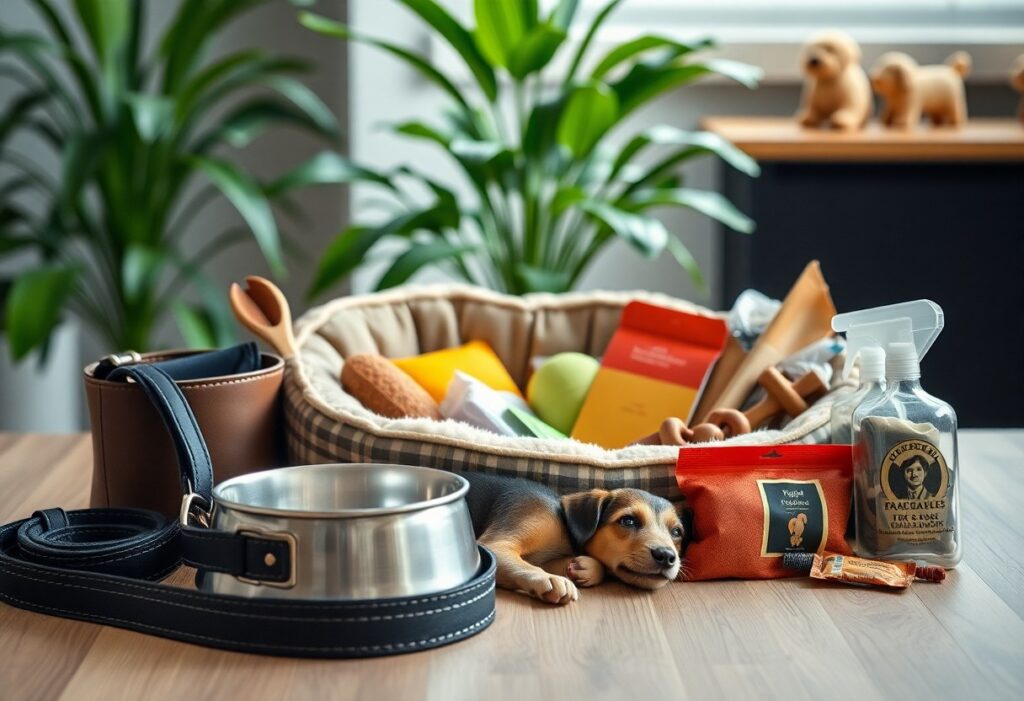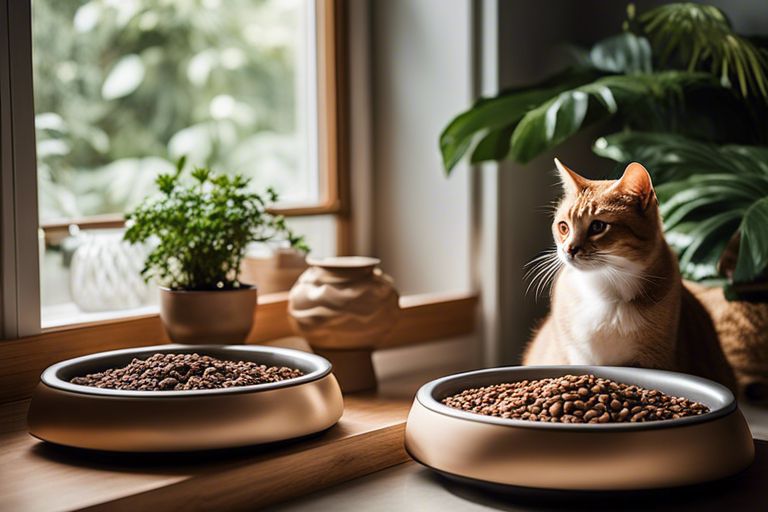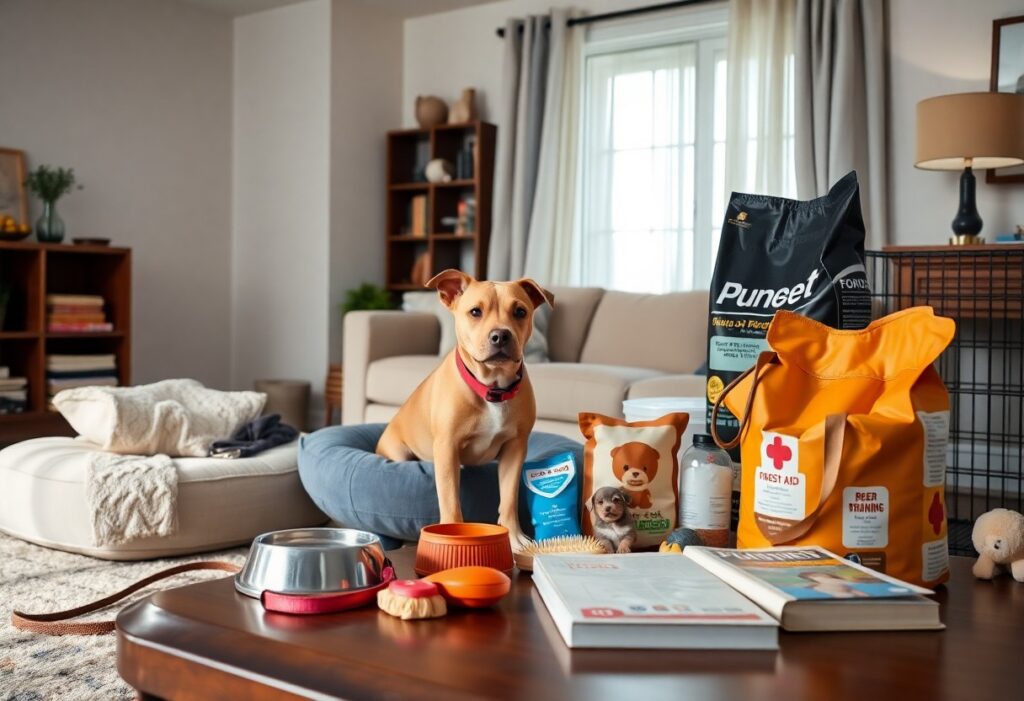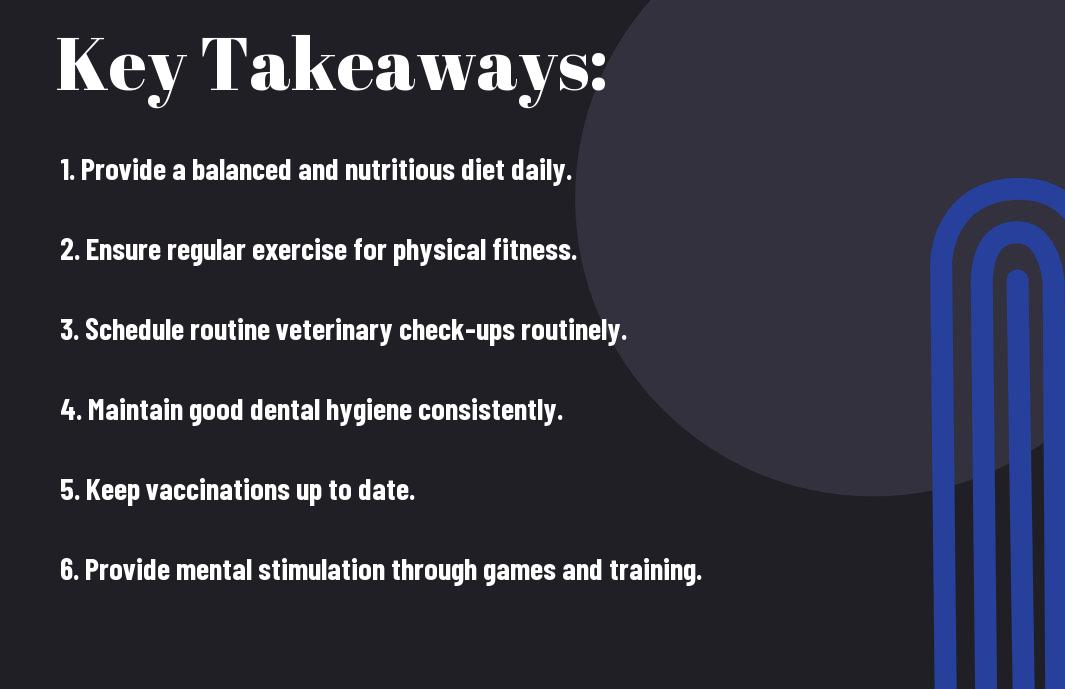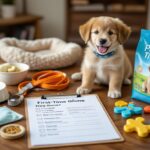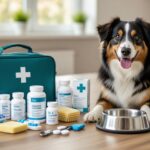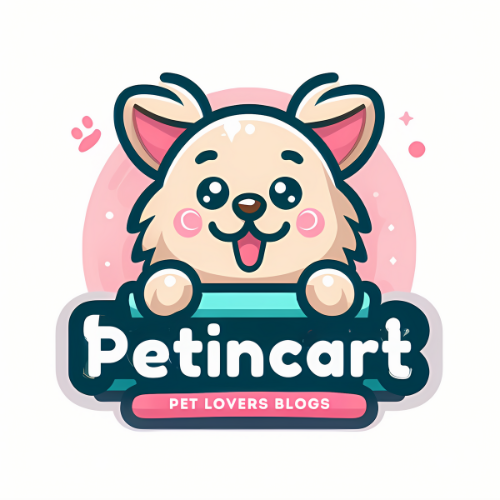It’s necessary to be fully prepared when bringing a new dog into your life. This ultimate checklist will guide you through the must-have items to ensure a smooth transition for both you and your furry friend. From food and grooming supplies to safety gear, having the right tools at your disposal promotes not only your dog’s health but also happiness. Equip yourself with the knowledge of what you need to provide a loving and secure environment for your new companion.
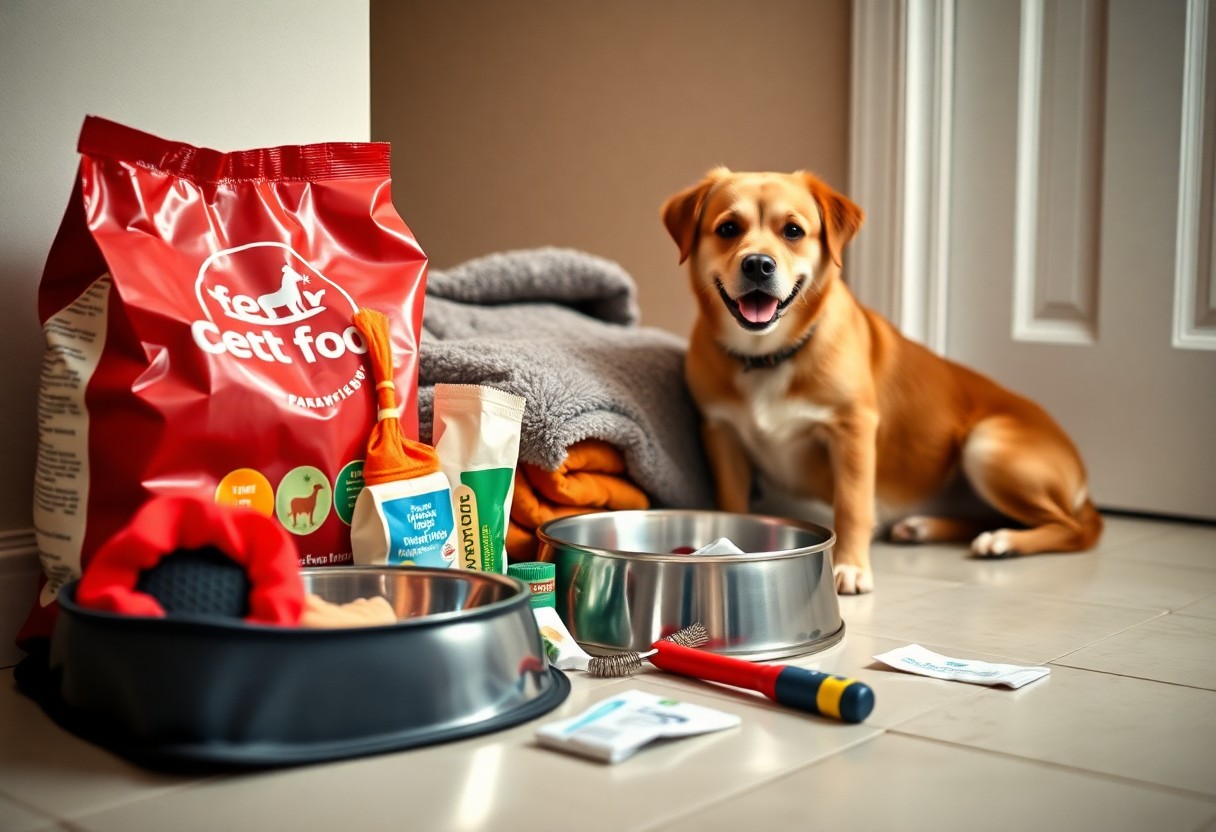
Key Takeaways:
- Essential items include high-quality food, water bowls, and comfortable bedding to ensure your new dog has a supportive environment.
- Training supplies such as leashes, collars, and training treats are vital for effective behavior management and bonding.
- Health and safety items, like a first-aid kit and appropriate grooming tools, are important for maintaining your dog’s well-being.
Essential Gear for Your New Companion
Equipping yourself with the right gear is foundational in ensuring your new dog’s comfort and your peace of mind. From basic necessities to specialized tools, each item in this section contributes to a well-rounded experience for you and your four-legged friend. By considering your dog’s needs and your lifestyle, you can create an environment where both of you thrive.
The Basics of Dog Supplies
Your initial investment should focus on important supplies that ensure your dog’s daily needs are met. A sturdy leash, a comfortable collar with identification tags, and a high-quality food and water bowl are just the start. These items promote safety and well-being, reinforcing your role as a responsible pet owner.
Essential Dog Supplies
| Leash | A must-have for walks and outdoor activities. |
| Collar | Provides identification and safety features. |
| Food & Water Bowl | Essential for nourishing and hydrating your pup. |
| Dog Bed | A comfortable resting space fosters relaxation. |
| Dog Crate | Offers a safe space for travel and training. |
Advanced Equipment Every Owner Should Consider
Diving deeper into canine care, advanced equipment enhances your new lifestyle with a dog. GPS collars can help track your dog’s whereabouts, while doggy training pads make indoor training smoother. Invest in enrichment toys and interactive games to stimulate their minds, preventing boredom and destructive behaviors. These items not only make life easier but also heighten the happiness and well-being of your pet.
Advanced Dog Supplies
| GPS Collar | Tracks your dog’s location, ensuring safety. |
| Training Pads | Facilitates house training for puppies. |
| Enrichment Toys | Encourages mental stimulation and play. |
| First Aid Kit | Preparedness for minor injuries or emergencies. |
| Pet Cameras | Keep an eye on your pet when you’re away. |

Health and Wellness Must-Haves
Prioritizing your dog’s health and wellness is vital. A well-rounded approach that includes regular veterinary visits, proper nutrition, and preventative care will help keep your furry friend happy and thriving. This section outlines the must-have items to ensure your pup remains in optimal shape while you navigate the joys and challenges of dog ownership.
Veterinarian Essentials: What You’ll Need
Having a good relationship with a veterinarian is non-negotiable. Be ready to invest in items such as a reputable dog medical record, which tracks vaccinations and health history. A first-aid kit tailored for pets should also be on your list, including vital supplies like gauze, antiseptic wipes, and vet-approved medications for common issues. These basics will prepare you for unexpected health situations and help keep your canine companion healthy.
Home Health Items for Preventative Care
To proactively care for your new dog, stock your home with vital health items. High-quality dog food is a must to ensure they get the necessary nutrients. Additionally, provide a schedule for routine vaccinations and a flea-and-tick prevention regimen. Tools for dental care, like toothbrushes designed specifically for dogs and dental chews, can greatly contribute to oral health, preventing serious issues down the line. Regular grooming items, including brushes and nail clippers, are also vital in maintaining not just their coat but overall comfort and health.
Investing in comprehensive home health items enhances your ability to mitigate health risks before they escalate. Specific dog food options tailored to breed, age, and weight can significantly affect energy levels and vitality. Regular dental check-ups can result in annual savings in vet bills from more severe dental work later. Additionally, acquiring appropriate grooming tools will reduce shedding and skin issues, leaving your pup healthier and happier. Keeping a routine checklist will help you consistently monitor your new dog’s wellness, making adjustments as necessary.
The Importance of Training Tools
Training tools play a significant role in developing your dog’s behavior and strengthening your bond. Investing in the right tools helps guide your pup’s learning process and sets the stage for effective communication between the two of you. Consistent training aids facilitate a smoother transition into the training regimen, ultimately leading to a well-behaved companion. By incorporating tools like clickers and proper leashes, you establish clear expectations, making it easier for your dog to understand what you want from them.
Must-Have Training Aids for New Dog Owners
Essential training aids include treats, clickers, and leashes, which all serve unique purposes in your training sessions. Treats motivate your dog and reinforce positive behavior when timed with praise. Clickers provide a clear signal to your dog when they’ve performed a desired action. A sturdy leash not only keeps your dog safe during walks but also serves as a tool for redirecting unwanted behaviors while training. Investing in these aids enhances your chances of successfully training your new friend.
Resources for Effective Training Techniques
Diving deeper into effective training techniques can yield remarkable results. Books, online courses, and local training classes provide structured guidance that can help in instilling good habits. Websites like the American Kennel Club and trainers such as Zak George offer valuable resources. Their insights cover various methodologies to suit your dog’s learning style, making it easier for you to build a positive training environment.
Exploring different training resources is vital for understanding various methodologies and approaches. For instance, many books provide step-by-step guides and practical exercises that you can implement right away. Online platforms often feature videos that visually illustrate techniques, making them easier to grasp. Participating in local training classes not only offers hands-on experience but also allows you to interact with other dog owners, creating a supportive network. The combination of these resources will empower you as a dog owner, ensuring that your training journey is effective and enjoyable for both you and your furry friend.
Creating a Dog-Friendly Environment
Establishing a dog-friendly environment enhances your pet’s happiness and ensures their safety. From selecting appropriate furniture to adding safety features, consider every detail that contributes to a cozy and secure living space for your new furry friend.
Furniture and Space Considerations
Choosing the right furniture is vital for a dog-friendly home. Opt for durable, stain-resistant materials that can withstand wear and tear. Keep valuable items out of reach and create designated spaces for your pup, such as a cozy dog bed or crate, to help them feel secure in your home.
Safety and Comfort Features Every Home Needs
A dog-friendly home prioritizes both safety and comfort features to keep your pet healthy and happy. Consider baby gates to restrict access to certain areas, ensuring your dog remains in safe zones. Additionally, incorporate slip-resistant mats, secure electrical cords, and remove any toxic houseplants from your living space.
Integrating safety features goes beyond basic precautions; it includes creating a nurturing atmosphere. For instance, installing screens on windows can prevent escapes, while utilizing storage bins for pet toys can minimize clutter. Consider adding calming products, such as a pheromone diffuser, to help ease any anxiety your dog may experience in their new surroundings. Adapt your environment, and you’ll foster a loving space where your dog can thrive.
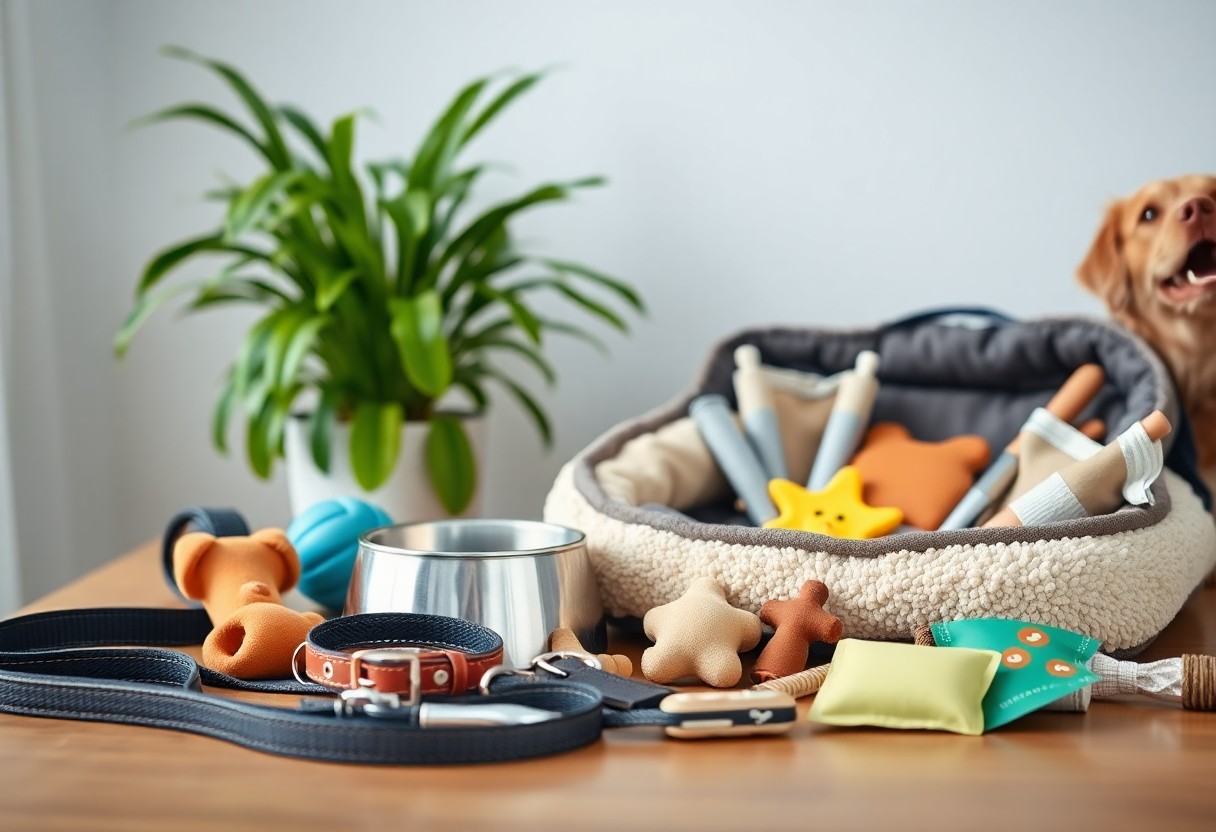
The Socialization Toolkit
Integrating your dog into diverse environments and social settings is paramount for their overall well-being. A well-rounded socialization toolkit will help you expose your pet to new experiences, people, and other animals in a positive manner. Preparing ahead ensures your dog grows up to be confident and well-adjusted, making outings a breeze and enriching their life immensely.
Essential Items for Social Interaction
Gather a few key items to enhance your dog’s social experiences. A sturdy leash and harness provide control during outings, while a good-quality crate can offer a safe space for quieter moments. Incorporating portable dog bowls and training treats promotes positive engagement with both new friends and unfamiliar environments, reinforcing good behavior throughout the process.
How to Encourage Positive Experiences for Your Dog
To build your dog’s confidence, start by introducing them to different stimuli gradually. Ensure each encounter is paired with something enjoyable—like treats or praise—to create positive associations. Focus on environments where your dog feels comfortable and monitor their reactions, intervening only if they show signs of stress.
Encouraging positive experiences not only shapes your dog’s behavior but also strengthens your bond. For instance, taking your dog to a dog park during quieter hours can provide a low-pressure environment for exploration. Allowing them to interact with calm and friendly dogs will help them understand social cues. Additionally, consider hosting playdates with known pets; this not only reduces anxiety but allows your dog to learn appropriate interaction in a familiar setting. By rewarding positive behaviors with four-legged friends and people alike, you lay a foundation for lifelong social skills that will last a lifetime.
Final Words
On the whole, having the right items for your new dog is imperative for ensuring a smooth transition and a happy life together. By equipping yourself with the must-have items from this ultimate checklist, you can focus on building a loving bond with your furry friend while meeting their needs effectively. Be proactive in understanding your dog’s requirements, and soon enough, both you and your pet will thrive in your new companionship.
FAQ
Q: What basic supplies do I need to bring home a new dog?
A: When bringing home a new dog, it’s imperative to have a few basic supplies ready to ensure their comfort and well-being. You will need a dog bed or crate for a safe sleeping space, food and water bowls, a high-quality dog food appropriate for their age and size, and a collar with an ID tag. Additionally, you should have a leash for walks, grooming tools like a brush, and some toys to keep them entertained and stimulated.
Q: How can I prepare my home for my new dog?
A: Preparing your home for a new dog involves creating a safe and welcoming environment. Start by dog-proofing your space: remove valuables from reach, secure wires and cords, and ensure that any potentially harmful substances, such as cleaning supplies or plants, are out of the dog’s reach. Designate a specific area for feeding and resting, and make sure you have adequate space for them to play. Also, consider purchasing baby gates to restrict access to certain rooms if needed.
Q: What should I consider when choosing food for my new dog?
A: Choosing the right food for your new dog is important for their health and growth. Look for a balanced dog food that meets their nutritional needs, keeping in mind their age, breed, and activity level. It’s advisable to consult your veterinarian for recommendations tailored to your dog’s specific requirements. Make transitions gradual, mixing their new food with the existing food from the breeder or shelter to avoid digestive issues. Always provide fresh water alongside their meals and avoid foods that are toxic to dogs, such as chocolate, grapes, and onions.
